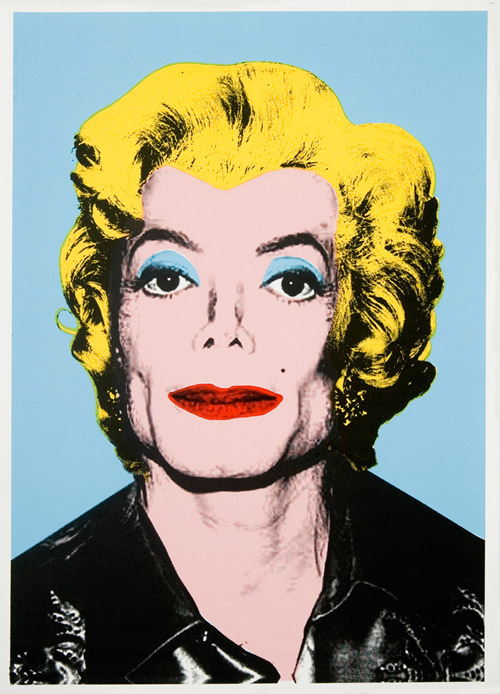J O’Shea at SuperTouch has posted a review of an art show by Mr. Brainwash (AKA Theirry Guetta). According to O’Shea, Brainwash is a hack, ripping off the style of pop artists like Warhol and street artists like Banksy and Shepard Fairey.
 After following pioneering street art legends like Banksy and Shepard Fairey around, camera in hand, shooting hundreds of hours of footage, however, the lure of cheap & easy fame began to eat away at [Guetta]. The desire to mint an original style proved more elusive. It all began several years ago with a series of uninspiring wheatpaste posters in the style of nearly every stencil artist that came before him depicting Guetta, with trademark facial hair and fedora, holding a camera, fused to the walls of Hollywood’s most heavily trafficked corridors. Further inspired by the success of Banksy’s self-produced “Barely Legal” solo show in 2006 (and with the encouragement of Sir Banks himself—possibly his biggest art prank on us all to date?), and having established sufficient ”street cred,“ Guetta began to plot his own ascent. The result is the exhibition in question, titled “Life is Beautiful” that currently occupies the formerly vacant CBS Studios on Sunset Blvd. . . . In the words of one of LA’s most pioneering street art provocateurs, Skullphone, “if Disneyland wanted to open a street art ride, this is what they’d have done.”
After following pioneering street art legends like Banksy and Shepard Fairey around, camera in hand, shooting hundreds of hours of footage, however, the lure of cheap & easy fame began to eat away at [Guetta]. The desire to mint an original style proved more elusive. It all began several years ago with a series of uninspiring wheatpaste posters in the style of nearly every stencil artist that came before him depicting Guetta, with trademark facial hair and fedora, holding a camera, fused to the walls of Hollywood’s most heavily trafficked corridors. Further inspired by the success of Banksy’s self-produced “Barely Legal” solo show in 2006 (and with the encouragement of Sir Banks himself—possibly his biggest art prank on us all to date?), and having established sufficient ”street cred,“ Guetta began to plot his own ascent. The result is the exhibition in question, titled “Life is Beautiful” that currently occupies the formerly vacant CBS Studios on Sunset Blvd. . . . In the words of one of LA’s most pioneering street art provocateurs, Skullphone, “if Disneyland wanted to open a street art ride, this is what they’d have done.”
The antics of Mr. Brainwash, and the reaction of O’Shea to them, made me think of Richard Lanham’s at times scathing review of pop art in The Economics of Attention. It is interesting to note that artists like Duchamp and Warhol, who Lanham calls “attention artists” or “attention economists,” were pranksters who may have really liked the joke that O’Shea so deplores: somebody sees how much money and prestige comes from making pop art, declares himself a pop artist, and starts to receive money and prestige through the wholesale copying of other artists’ methods and works. Mr. Brainwash is merely manipulating what Lanham calls the “Interpretive Bureaucracy of Attention Economists,” the establishment of art critics and promoters who can be trusted to find importance and meaning where there is none.
I would be interested in hearing from other readers of Lanham’s book to see how they think Mr. Brainwash’s work fits into the author’s description of the Attention Economy.
via Right Some Good
Recent comments
2 years 29 weeks ago
2 years 44 weeks ago
2 years 44 weeks ago
2 years 50 weeks ago
3 years 4 weeks ago
3 years 4 weeks ago
3 years 4 weeks ago
3 years 6 weeks ago
3 years 6 weeks ago
3 years 6 weeks ago